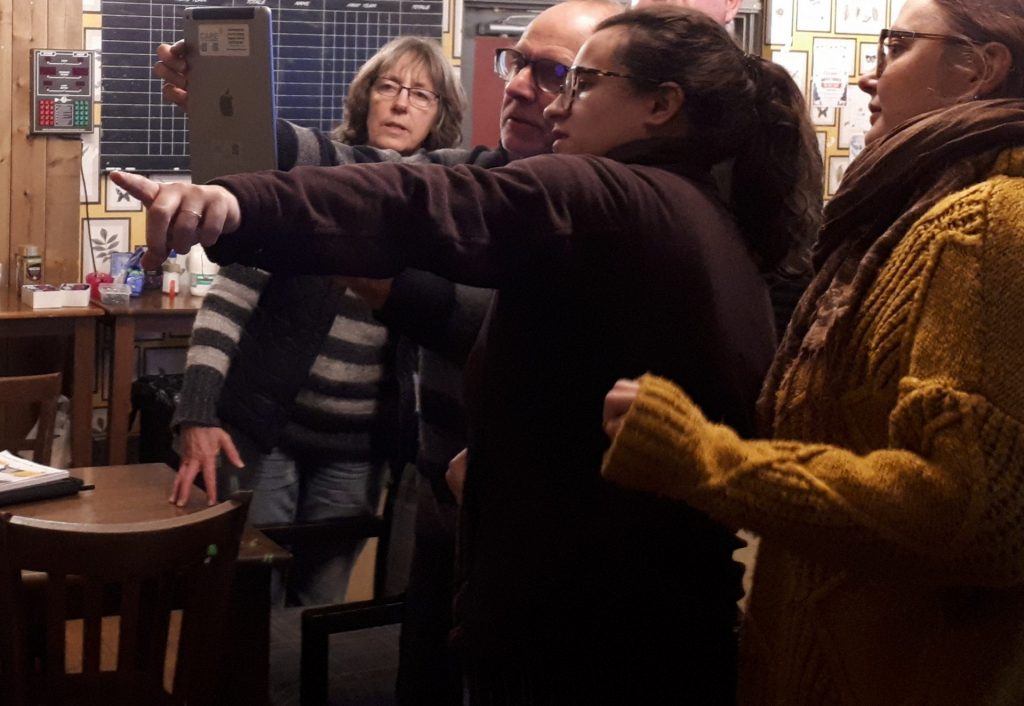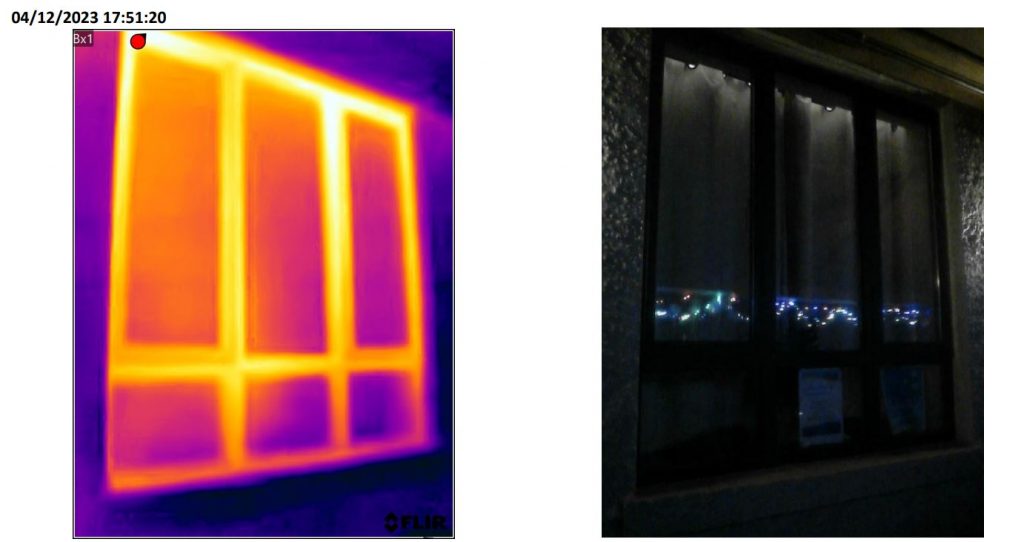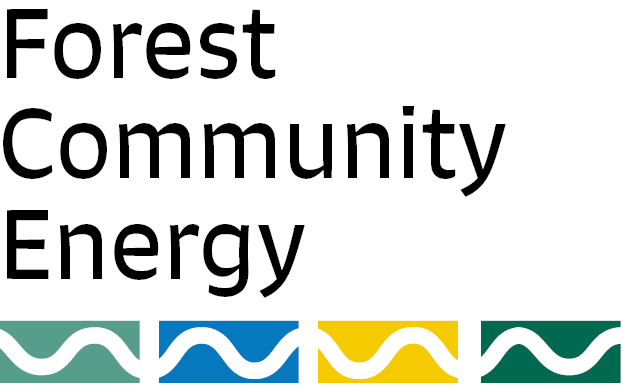Following a thermal imaging demonstration event at the Sling Club, a local community space in the Forest of Dean, AURORA Forest of Dean and Forest Community Energy (FCE) launched a thermal imaging camera loaning scheme for residents.
This article provides an overview of how the scheme was run, reflects on learnings and outlines plans for replication.
What were the aims of the loan scheme?
Thermal imaging is becoming an increasingly used technology for identifying where heat is being lost in homes. It is often used by qualified energy surveyors but also now by community groups looking for a visual and engaging way of highlighting areas of energy inefficiency in homes.
Following a similar model to other communities in the UK, Forest Community Energy decided to run this scheme to engage local residents in using thermal imaging technology to identify and target energy saving measures in their homes.
How did it work?
The loan scheme was trialled between February and April 2024 following some basic energy advice training that was provided to FCE volunteers by the Centre for Sustainable Energy (AURORA FOD project partners) in January 2024.
The cameras were kept at the Sling Club as a base in the community and the club with support from FCE volunteers helped to get the cameras out to residents that had signed up to borrow them for 2-3 days at a time.
The cameras were loaned out with a pack of resources to help users use the cameras and take action based on their findings. To find out more about the resources that were developed see our previous article here.
Two “Energy Café” events were also run from the Sling Club by the AURORA FOD team and FCE volunteers. These events were run to get people to sign up to borrow the cameras, show how they worked and provide some informal energy saving advice to local residents by partnering with Severn Wye Energy Agency – a local energy advice agency.
Learnings from the pilot scheme
There were 11 uses of the cameras (including the Sling Club thermal imaging survey). From feedback forms returned by users of the camera, and a reflection session with FCE volunteers, the following learnings were highlighted:
- Everyone who used the cameras said they were easy to use but favoured the Flir C3X model. In some cases, some people fed back that having more support to help make sense of the images would be helpful.
- Everyone who got involved said that using the cameras and the resources improved their knowledge on energy saving behaviours, energy efficiency building measures and thermal imaging.
- Users of the cameras said that the cameras helped to highlight:
- Where insulation was present and where the gaps were in their walls and loft.
- “Thermal bridging” happening where insulation wasn’t present. This is where there is weak points (or areas) in the building envelope allows heat to pass through more easily.
- Where hot water pipes needed insulation.
- Where windows and doorframes needed draughtproofing or re-sealing.
- Where heat was being lost around chimneys and loft hatches.
- Where radiators were losing heat through the walls.

- Everyone who used the cameras said that they would take action based on the results (either through insulating or draught proofing their homes/buildings). In many cases, these images were just a first step to investigate the homes more (through a professional survey for example).
One great highlight to come out of these activities was that the Sling Club used the results of their thermal imaging survey to develop their “Building Energy Sustainability Plan”. This plan outlines all the heat loss areas identified and lists all the actions that are required for the building to reduce energy consumption.
“We were able to use this plan and our thermal imaging photos to demonstrate the cold bridges created by our aluminium windows. This evidence has been used in a grant application (Community Infrastructure Capital Grant Scheme – hosted by our district council). We’ve applied for £16,000 for new double-glazed windows. We were able to evidence throughout the application how this measure would help us to reduce our carbon emissions (by 0.83-1.5 tonnes of CO2), linking with the net zero ambitions of the Forest of Dean” – Sammy Betson, Sling Club Committee Member and FCE volunteer.

- Some of the challenges from this pilot scheme included:
- Issues with using the app-based camera for some users with lower levels of technical confidence or literacy.
- Working out insurance requirements for the cameras to be insured by the clubs.
- Poor weather making it hard to stand outside and take photos.
- Lack of commitment from some residents who signed up.
- Lack of options for Forest of Dean residents living in inefficient older and traditional homes. These homes are difficult to insulate and sometimes impossible given strict planning regulations in the UK. When it is possible, it can be very expensive. Some residents expressed feeling scared of what the cameras will show as they can spot problems they cannot act on. Residents need to be supported to find sources of advice and funding to help install measures in their homes by signposting residents to local energy advice services.
Future plans
The pilot scheme has demonstrated the impact of using this easy-to-use technology for supporting residents and community groups to take action to reduce heat loss in their homes/buildings. Going forward, AURORA FOD and FCE would like to see this approach replicated through other community “hubs” in the future. Community hubs could include: community centres, village halls, libraries, shops…
There are already some people who are interested in taking this up and the AURORA project can facilitate this. We recognise that more training and engagement events are required to ensure that people are trained up to use the cameras and the images and that volunteers have the knowledge and confidence to support residents.




